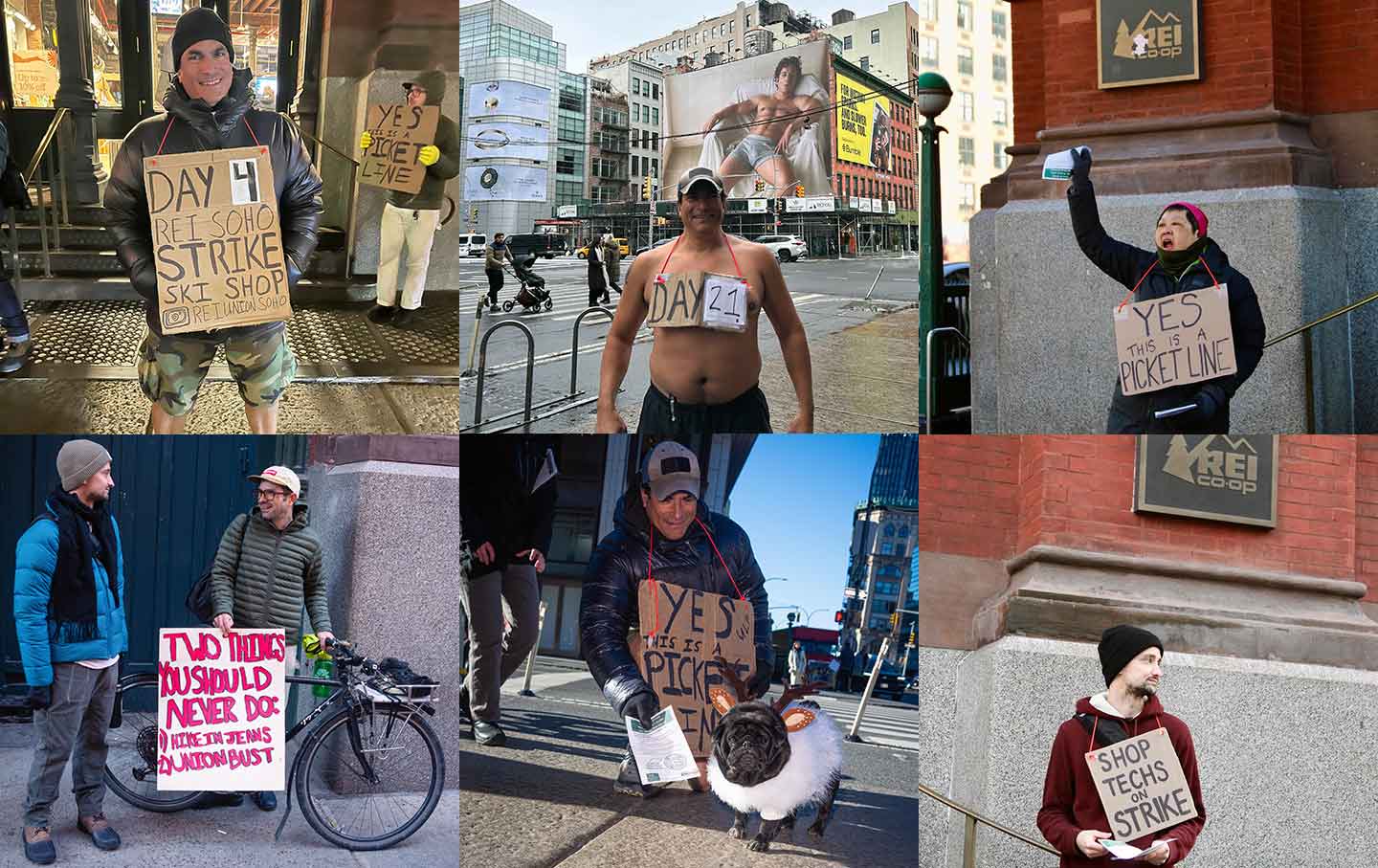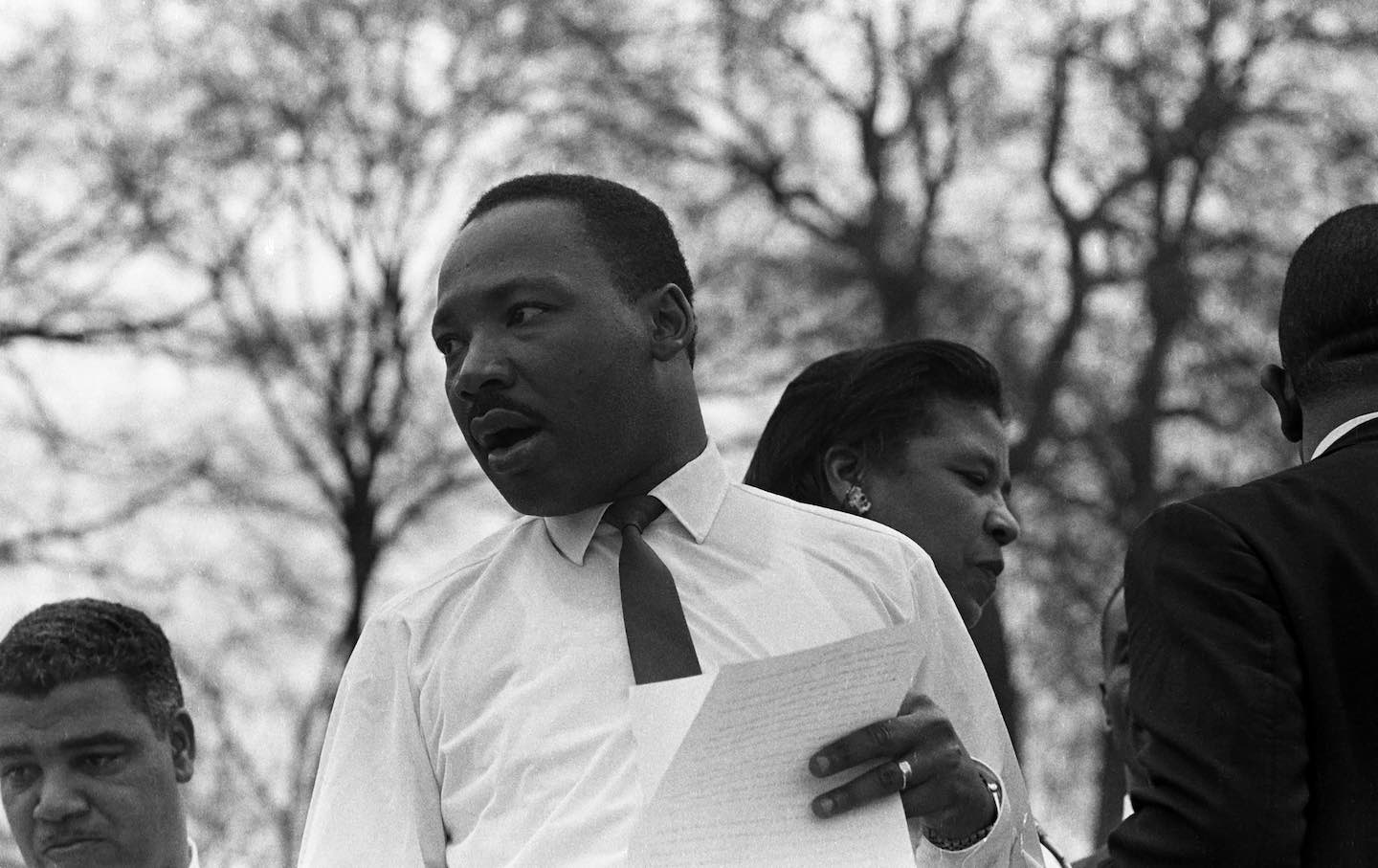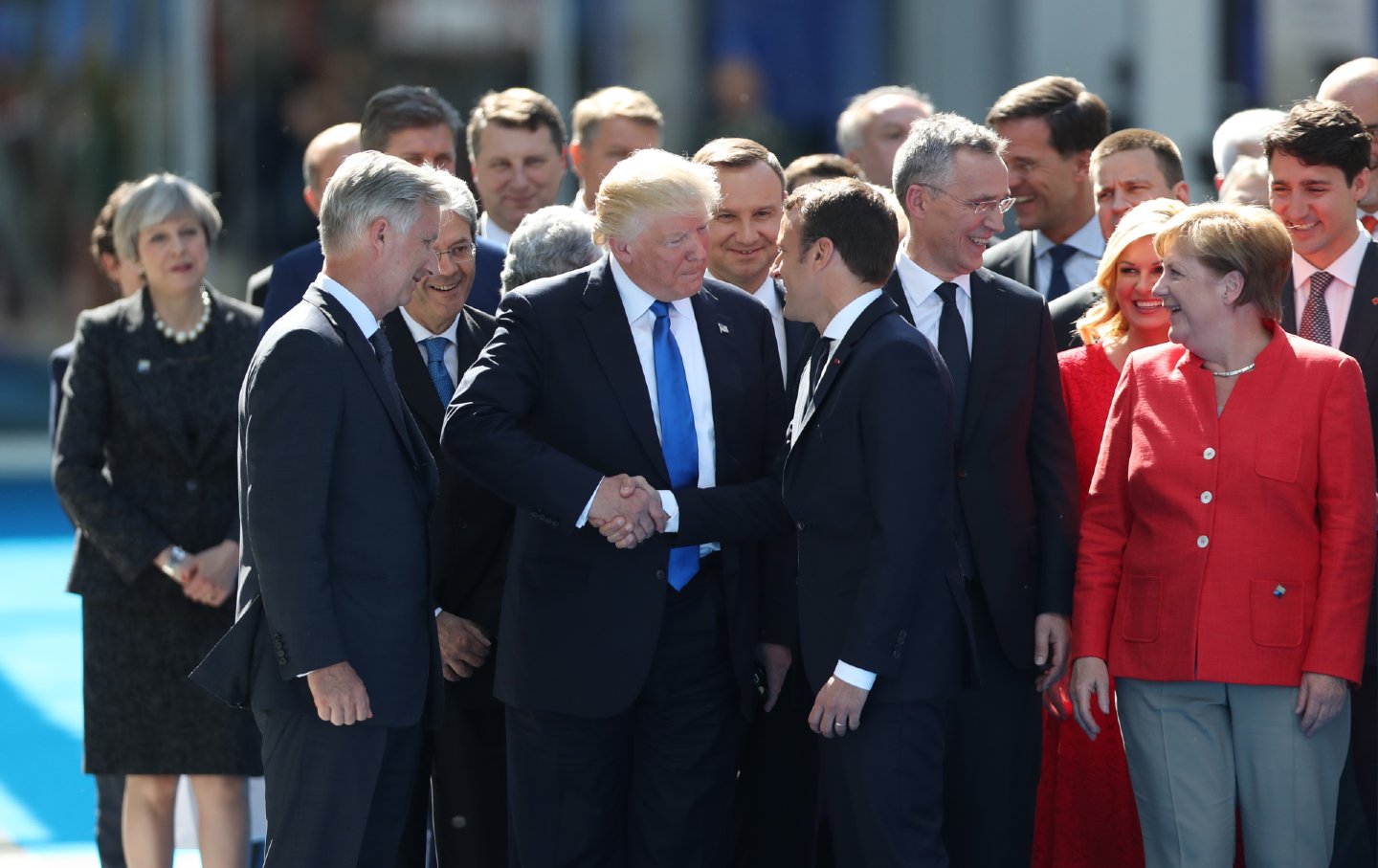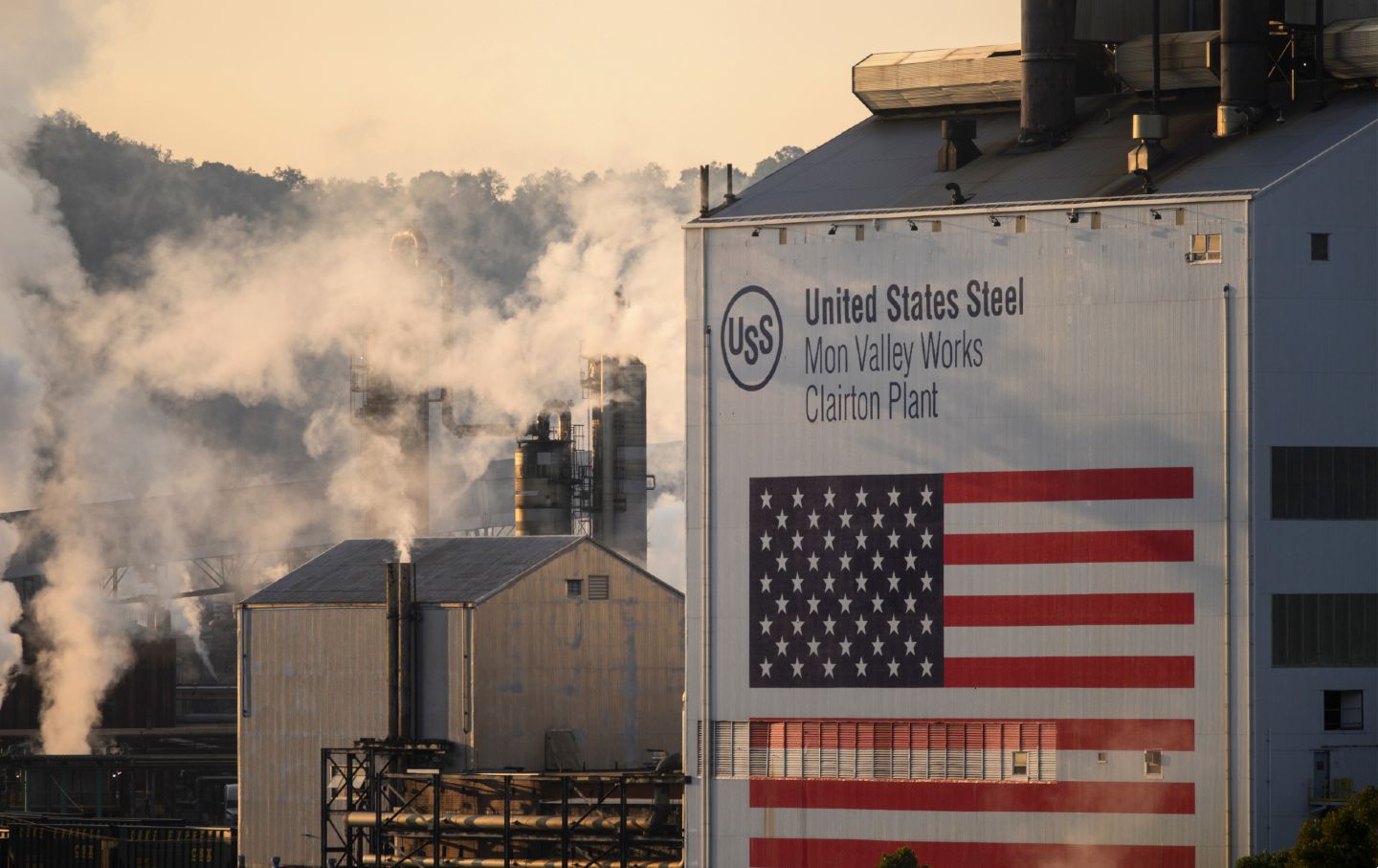Bernie Sanders: Amazon “Accepts Worker Injuries…as the Cost of Doing Business”
Jeff Bezos is pocketing hundreds of billions while Amazon warehouses record injuries at 30 percent above the industry average.
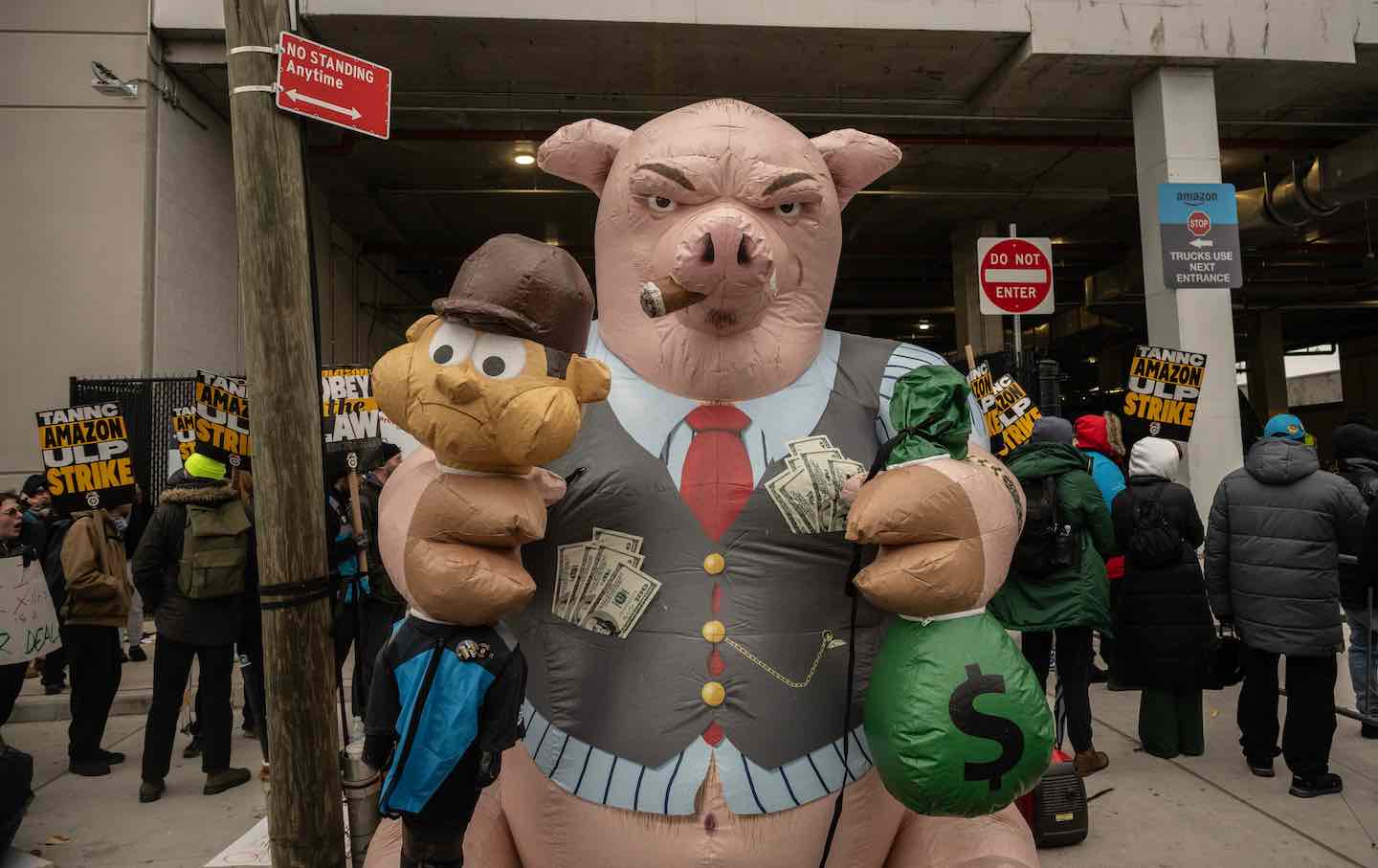
An inflatable pig stands alongside Amazon workers and union members who picketed outside the DB4 Amazon distribution center in the Queens borough of New York, on December 20, 2024.
(Victor J. Blue / Bloomberg)
Jeff Bezos is getting exponentially richer, while the employees who create his wealth are reporting debilitating injuries and extremely high rates of musculoskeletal disorders. This juxtaposition has led to rising anger on the part of Amazon workers, thousands of whom struck the company at the peak of the holiday season, in order to focus attention on the corporations profiteering at the expense of its workers. Those strikes, from Staten Island to San Francisco, drew a good deal of attention to demands by the Teamsters and its affiliated Amazon Labor Union for higher wages and increased benefits. But the workers also want consumers to know that conditions inside Amazon warehouses are an extremely serious issue. Indeed, an April 2023 study revealed that while Amazon employs roughly one-third of all warehouse employees in the United States, it accounts for more than half of all warehouse injuries. “For how much we do for this company, we deserve higher pay, better benefits, and safer work conditions,” said Tobias Cheng, one of the workers who struck the corporation’s sprawling KSBD air hub in San Bernardino, California.
Bezos, whose skyrocketing wealth is approaching a quarter trillion dollars, is a notoriously anti-union employer. So it comes as no great surprise that his company, which now has more than 700,000 workers, has tried to foster the fantasy that the strikes—and the concerns of Amazon’s workers—are of no consequence. But the Bezos team did not hide the fact that they were unsettled when Senator Bernie Sanders, who chairs the Senate Health, Education, Labor and Pensions (HELP) Committee, spoke bluntly about the corporation’s disregard for worker safety.
Just before Christmas, the committee released “The ‘Injury-Productivity Trade-Off’: How Amazon’s Obsession with Speed Creates Uniquely Dangerous Warehouses,” a study based on more than 18 months of research by Sanders and HELP committee staff into working conditions inside Amazon warehouses. The conclusions, as Sanders noted, were devastating. “The shockingly dangerous working conditions at Amazon’s warehouses revealed in this 160-page report are beyond unacceptable,” said Sanders. “Making matters even worse: Amazon’s executives repeatedly chose to put profits ahead of the health and safety of its workers by ignoring recommendations that would substantially reduce injuries at its warehouses. This is precisely the type of outrageous corporate greed that the American people are sick and tired of.”
Amazon did not take kindly to that observation. Within hours of the release of the report, Amazon released a 2,400-word denunciation of the HELP committee’s study, which declared that the report is “fundamentally flawed,” and asserted that “it’s now clear that this investigation wasn’t a fact-finding mission, but rather an attempt to collect information and twist it to support a false narrative.” In classic “protest too much, methinks” fashion, the Amazon statement featured repeated assertions along the lines of: “At Amazon, our employees’ safety is and always will be our top priority—nothing is more important to us.”
Those claims were hard to square with the history of complaints about Bezos prioritizing profits and defending corporate greed, and with accusations that Amazon has engaged in systematic price gouging.
Far more compelling are the detailed findings of committee’s report on the “Injury-Productivity Trade-Off,” an analysis of which explains:
As part of the investigation, the Committee analyzed Amazon’s data and found that Amazon warehouses recorded over 30 percent more injuries than the warehousing industry average in 2023. The Committee also found that in each of the past seven years, Amazon workers were nearly twice as likely to be injured as workers in other warehouses. Alarmingly, this problem is widespread: More than two-thirds of Amazon’s warehouses have injury rates that exceed the industry average.
The key findings of the report from Sanders and the HELP Committee offer an indictment of Amazon’s practices, especially the conclusions that
- Amazon manipulates its workplace injury data to make its warehouses seem safer than they actually are.
- Contrary to its public claims, Amazon imposes speed and productivity requirements on workers, commonly called “rates.”
- Amazon forces workers to move in unsafe ways and to repeat the same movements hundreds and thousands of times each shift, resulting in extremely high rates of musculoskeletal disorders.
- Although Amazon has safety procedures in place, the company’s speed requirements make those procedures nearly impossible to follow.
- Amazon’s failure to ensure safe working environments—based in large part on its unsustainable rates and productivity quotas—results in debilitating injuries.
- Amazon has studied the connection between speed requirements and worker injuries for years, but refuses to implement injury-reducing changes because of concerns those changes might reduce productivity.
- Amazon actively discourages injured workers from receiving outside medical care, putting injured workers further at risk.
- Workers who need short-term or permanent workplace accommodations for work-related injuries and disabilities experience significant challenges obtaining appropriate accommodations.
- Amazon terminates workers injured in the company’s warehouses who are on approved medical leave.
- Amazon deflates the injury numbers it records for federal regulators.
“Amazon forces workers to operate in a system that demands impossible rates and treats them as disposable when they are injured,” said Sanders. “It accepts worker injuries and their long-term pain and disabilities as the cost of doing business. That cannot continue. Amazon is a $2.3 trillion corporation. It made over $36 billion in profits last year alone. Its founder, Jeff Bezos, is the second wealthiest person on the planet worth over $240 billion. Its CEO, Andy Jassey, made over $300 million in total compensation since 2021. Amazon should be one of the safest places to work, not one of the most dangerous. Amazon cannot continue to treat its workers as disposable. It must be held accountable.”



